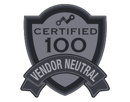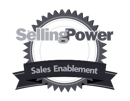Coaching Skills and Skill Categories in Membrain Elevate form the backbone of a structured and effective coaching system. These elements are crucial for organizing coaching sessions and aligning them with the strategic goals and developmental needs of individuals and teams.
Skills pinpoint specific areas of focus within a coaching session, ensuring that the content is directly relevant to the participant's growth and objectives.
Skill Categories, on the other hand, group these Skills under broader themes, facilitating easier management and accessibility. Together, they enhance the coaching experience by providing clarity and direction, allowing both coaches and coachees to navigate the coaching process with greater efficacy and purpose.
To organize Skills, Membrain Elevate allows the creation of categories. Categories serve as overarching themes under which specific Skills are grouped, making them easier to manage and navigate. To add a new category:



To effectively create and manage Skills within Membrain Elevate, follow these detailed steps to ensure each Skill is appropriately set up and categorized:
Access Settings: In the top-right corner of the Elevate page, click on the gear icon known as the Elevate settings.
View Skills and Categories: Once in the settings, select the option to view all existing skills and their categories. This gives you a comprehensive overview of how Skills are organized.
Add a New Skill: In the Skills tab, navigate to the bottom of the category where the new Skill will be added. Click "Add Skill" for a single skill or "Add Multiple Skills" to add several. Provide the name for the new Skill and enter a description, outlining its goals and relevance to broader coaching objectives.
From the "Usable By" menu, choose which user(s) will be able to use this skill when creating coaching activities.
Categorize the New Skill: If the new Skill needs to be placed under a different category, select the appropriate category from the dropdown menu or create a new category if necessary. Proper categorization helps maintain organizational structure and enhances Skill accessibility.
Save Changes: Confirm all information is correct and save the changes to finalize the addition or modification of Skills.
Note: If relevant, enable the option to include your skills in skill assessments. Learn more on how to set this up here.
Each Skill can be associated with a color based off of it's category color, enhancing the visual experience and making it easier to identify the focus of coaching efforts. This color-coding is evident in graphs and overviews within the platform, allowing users to see at a glance which Skills are being emphasized. When you hover over a coaching activity, the relevant Skills are highlighted, providing immediate insights into the session's focus. This feature extends to listings of coaching activities and overview pages, where trends and patterns in coaching focus are clearly displayed.
Skills and categories in Membrain Elevate are essential for streamlining coaching processes and ensuring that they are aligned with specific developmental goals. By effectively managing these elements, organizations can enhance the clarity and focus of their coaching sessions, thereby improving outcomes for both coaches and coachees. This structured approach fosters an environment of continuous learning and targeted development.
From north to south, east to west, Membrain has thousands of happy clients all over the world.



